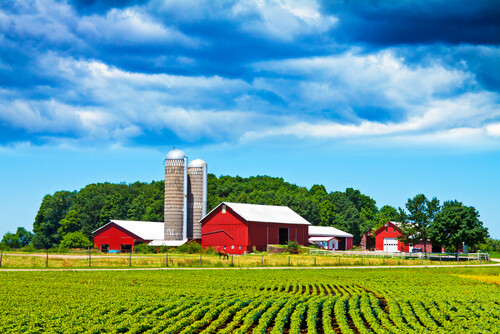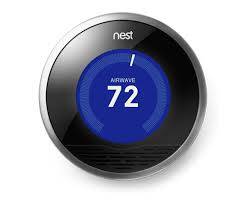 The agricultural industry has seen many changes in the past 100 years. Since the birth of the industrial agriculture in 1900, we have moved forward to the era of digital enhanced agriculture where everything that is done prior to seeding and up to after harvesting produces data that can be analysed.
The agricultural industry has seen many changes in the past 100 years. Since the birth of the industrial agriculture in 1900, we have moved forward to the era of digital enhanced agriculture where everything that is done prior to seeding and up to after harvesting produces data that can be analysed. The agricultural industry has seen many changes in the past 100 years. Since the birth of the industrial agriculture in 1900, we have moved forward to the era of digital enhanced agriculture where everything that is done prior to seeding and up to after harvesting produces data that can be analysed. Big data already transformed the agricultural industry a lot and in the coming decade this will become visible in all areas of agriculture in the Western world and increasingly also in the Developed world. There are three areas that will be affected the most by the opportunities of big data:
The agricultural industry has seen many changes in the past 100 years. Since the birth of the industrial agriculture in 1900, we have moved forward to the era of digital enhanced agriculture where everything that is done prior to seeding and up to after harvesting produces data that can be analysed. Big data already transformed the agricultural industry a lot and in the coming decade this will become visible in all areas of agriculture in the Western world and increasingly also in the Developed world. There are three areas that will be affected the most by the opportunities of big data:- Improved efficiency and reduced costs of all machines operated while farming;
- Improved productivity and efficiency of crops as well as animals;
- To mitigate weather conditions and optimize pricing for products.
The machines
The Internet of Things and the Industrial Internet will greatly affect agricultural machines such as tractors, agricultural sprayers, harvesters, soil cultivating equipment or cow milking machines. Sensors in machines, from large tractors to cow milking machines, can tell the farmer a lot of information, in real-time, 24/7 without the farmer having to be full-time available. The machines are becoming smart machines that can talk to each other as well understand their conditions.
Sensors can predict when problems are at hand and can take proper action before actual damage is done. When a problem does occur, the farmer can immediately see what the problem is and take action. If the problem will be more serious, a service employee can visit the farmer before the equipment breaks down thereby minimizing the machine-downtime. In addition, the effective use of sensors within agricultural machines can increase productivity throughout many different agricultural processes.
Apart from predicting failures and maintenance, sensors can also help to save farmers a lot of fuel required for harvesting or seeding crops as well as other transportation. Computers can optimize the best driving conditions when working on the land. Especially for farmers who have a large plot of land to maintain, a computer is better able to determine the shortest route to drive when working on the land. In combination with exact coordinates of the land, the optimized road can save a lot of fuel.
Combined with machine-to-machine communication, it will help the farmer control the growing number of machines at a farm. When the machines talk to each other, they know each other’s positions and can adjust accordingly if necessary. With smart machines one person can manage an entire fleet of machines, while saving time and money. In addition, the system can monitor the productivity of each machine and match that with the input to ensure optimal usage of the machine. Diagnostics manage the machines in real-time to ensure the optimal settings are used. All the data that is collected can be analysed by the farmer to better understand how the machines are operating and how the operations can be improved even further.
The weather and pricing
Weather conditions can severely affect the output of the land. Local weather conditions are difficult to predict but with the right algorithms farmers can be warned on time when to harvest or plough because of upcoming (extreme) weather conditions, tailored to the local areas of their land.
If the data is combined with real-time market information, farmers can mitigate price fluctuations better. The volatility on the market of crops can be substantial. Speculations can increase the price of crops or bring it down. Using predictive analytics the price of a certain crop can be determined upfront in a certain location. This will help the farmer to get the right price for the right crop at the right moment in time at the right location.
The crops and the animals
Although optical, mechanical, electromagnetic and radiometric sensors have been tested since almost a decade, big data technologies really make precision agriculture interesting. Precision agriculture includes recognizing, understanding and exploiting information that quantifies variations in soil and crops within agricultural fields.
With such sensors in the ground in combination with a smart irrigation system, farmers can optimize the productivity of crops. The irrigation system knows exactly which crops require what supplements, when and how much. This will prevent giving too much or too little supplements to the crops, saving a lot of money on fertilizer, but also increasing the output of the crops. To understand soil conditions and improve soil output even more, sensors can be implemented in the ground to better understand soil conditions and to improve the output when the algorithm tells the farmer when to plant which crops where. Algorithms can also inform the farmer when the best time is to plough or to harvest in order to optimize the output.
Not only crops can be improved with big data, also the animals will benefit from big data technology. Having sensors in the sheds will give input on the conditions of the animals. Sensors can automatically weigh the animals and adjust feeding if required. Depending on the conditions in the shed or the conditions of the animals, feeding can be adjusted as well. The animals will receive the right food and the right amount at the right moment.
Chips in the animals can also monitor their health conditions. Animals that are sick or are becoming sick will automatically receive medication in their food. Conditions in the shed can automatically be adjusted if the animals are affected by it. Stress can be detected and measures taken to ease the animals as much as possible. Special collars can help the farmers with massive plots of land to know in real-time where the cattle graces. It can help farmers track their herds and see via the smartphone where they are. The sensor can inform the farmer also about the (mental) condition of the cow and whether or not action is required.
Big data turns the traditional agricultural industry upside down. Although the investments can be substantial for farmers, the potential benefits of applying big data technologies on the field are enormous. Companies like John Deere are working hard to make this possible, as can be read from this use case. Do you know any other application of big data in the agricultural industry? Please join the discussion below via the comments.







